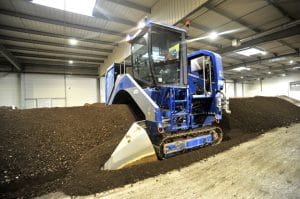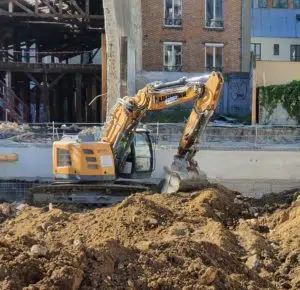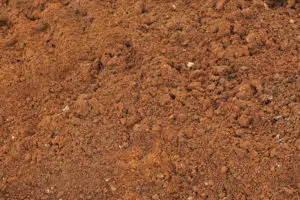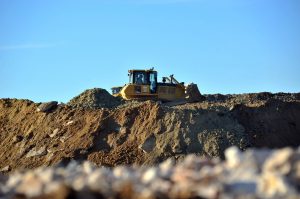Find out more about polluted soil from construction sites
Regulatory framework for excavated soil in the construction industry
- When excavated soil and materials leave the construction site, they take on the legal status of waste.
- The status of excavated soil is defined by Directive 2008/98/EC of the European Parliament and of the Council of November 19, 2008 on waste.
- This directive was transposed into French law by Ordinance no. 2010-1579 of December 17, 2010.
- The typology of construction and public works soils is defined in article R541-8 of the French Environment Code.
What types of soil are there? inert? polluted?
Soil analyses carried out on excavation sites define the type of soil excavated. Depending on the type of soil, regulations define which outlets are authorized to receive it.
Excavated polluted soils show chemical analysis results above the thresholds for inert soils.
- Inert soils are known as class 3 or K3 soils. The sites authorized to receive them are Installations Classées pour l’Environnement (ICPE), whose administrative name is Installation de Stockage de Déchets Inertes (ISDI). Inert soils can also be accepted under Permis d’Aménager (PA).
- Non-hazardous” soils are class 2 soils (K2). They are not inert. They are stored in non-hazardous non-inert waste storage facilities (Installations de Stockage de Déchets Non-Inertes Non-Dangereux – ISDND). The cause of pollution of Class 2 land is generally anthropogenic, i.e. caused by human beings. For example, soil polluted with hydrocarbons.
- Hazardous soils are class 1 (K1) soils. Their disposal is handled by dedicated centers authorized to receive them. It is estimated that they account for 1% of soil from construction sites.
- 72% of excavated soil is considered inert, with no interference with the environment
- 26% are non-hazardous soil and non-inert materials
- 2% of earth and building materials are considered hazardous
Soil polluted with hydrocarbons at ECT’s biological treatment center in La Courneuve (93)
Gil Fornet
Polluted sites and soils
The types of soil excavated from a construction site depend directly on the quality of the subsoil, which may be potentially polluted.
When applying for prior authorization, ECT checks that the site address is not listed in the BASOL and BASIAS site and soil databases. This approach is directly in line with the chain of traceability for excavated soil.
BASOL is a database set up by the MTES, listing (potentially) polluted sites and soils . These are sites which, as a result of former waste dumps or
of infiltration of polluting substances, present a pollution likely to cause a nuisance or a perennial risk for people or the environment.
the environment. Due to the industrial origin of pollution, legislation governing classified facilities is the most frequently used regulation for
deal with the corresponding situations
Inventory of polluted sites BASIAS
BASIAS is a national database of abandoned and active industrial sites likely to cause environmental pollution, managed by MTES. The inventory of sites is carried out by the départements during regional historical inventories.
The aim of this database is to be a reference for players in the fields of urban planning, land, construction, real estate and environmental protection.
How does ECT manage soil from mixed sites, with polluted soil and inert soil?
-
The site is managed by a dedicated project manager who analyzes the site layout. It sets up disposal channels to sites authorized to receive the various types of soil. The mesh plane is a 3-dimensional plane: length, width and depth. Meshes are defined, analyzed and characterized.
-
An ECT environmental technician on site monitors the phasing of excavations.
- Depending on the size of the excavation, the environmental technician manages the evacuation of the soil to inert soil recycling sites or to sites treating polluted soil. Each evacuation is recorded using transport vouchers. recorded on ECT's chronological register.
Soil polluted with hydrocarbons at ECT’s biological treatment center in La Courneuve (93)
Gil Fornet
Contact
sales department



